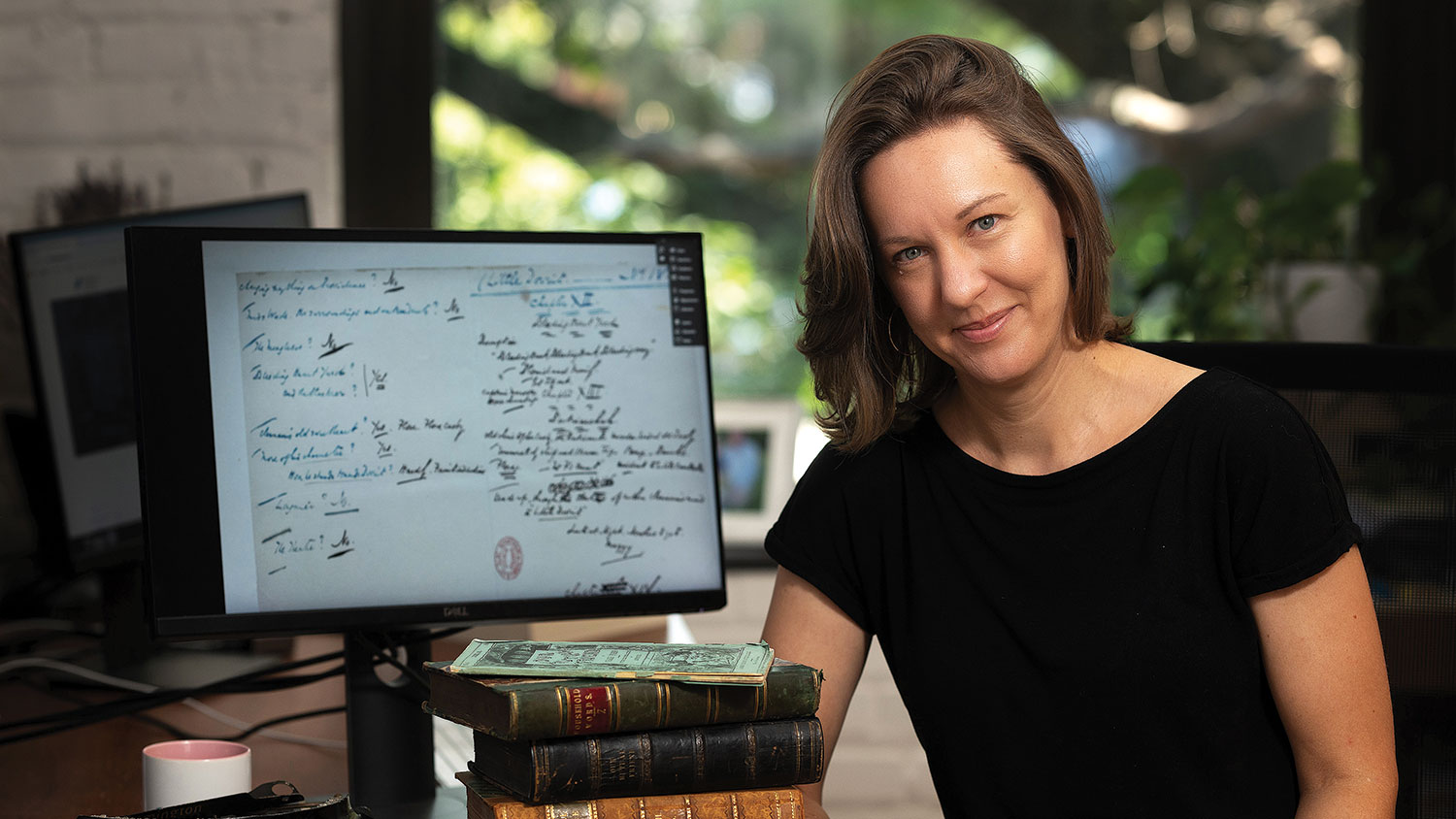Some Novel Research
An interactive website uses Charles Dickens’ working notes to explore his creative process.

Those of us who Sunday-binge an entire series on Netflix in one sitting would be loath to consume Victorian novels. That’s because of how books were produced and released in 19th century England — as serialized installments in periodicals.
It’s that very idea that guides a new research project launched by Anna Gibson, an assistant teaching professor in the English department. The Digital Dickens Notes Project (DDNP) is an interactive website that reveals how that era’s great novelist pieced together classics like David Copperfield.
“[Charles] Dickens was not only publishing all of his novels in serial installments. He was also writing them serially,” says Gibson, who began the project years back as a Duke University Ph.D. student studying forms of the Victorian novel. “He was writing them while people were reading them.”
Dickens’ original working notes for his novels are in an archive in London. Gibson and Adam Grener, the project’s co-director and a literature professor in New Zealand, visited the archive and transcribed the notes, also building in an exhaustive library of annotations to accompany them online. Visitors to the project’s website interact digitally, seeing Dickens asking questions on the left side of a page, like what characters to include. And on the right, they see his formula — chapter headings and summaries. “You can see him,” Gibson says, “asking himself questions and then coming back later in a different ink to answer the question and changing his mind and crossing things out.”
With the goal of adding three more, Gibson and her team have uploaded their work for the novels David Copperfield, Bleak House, Hard Times and Little Dorrit. The latter’s notes show Dickens grappling with fitting in all his ideas, and that the novel’s title protagonist didn’t even appear in the first installment.
“He had a massive impact on the way that we tell stories, on the way we consume fiction.
Gibson appreciates the project for what it shows about Dickens. “He had a massive impact on the way that we tell stories, on the way we consume fiction,” she says. “He didn’t invent serial fiction. But he did kind of shape it into its modern form.”


